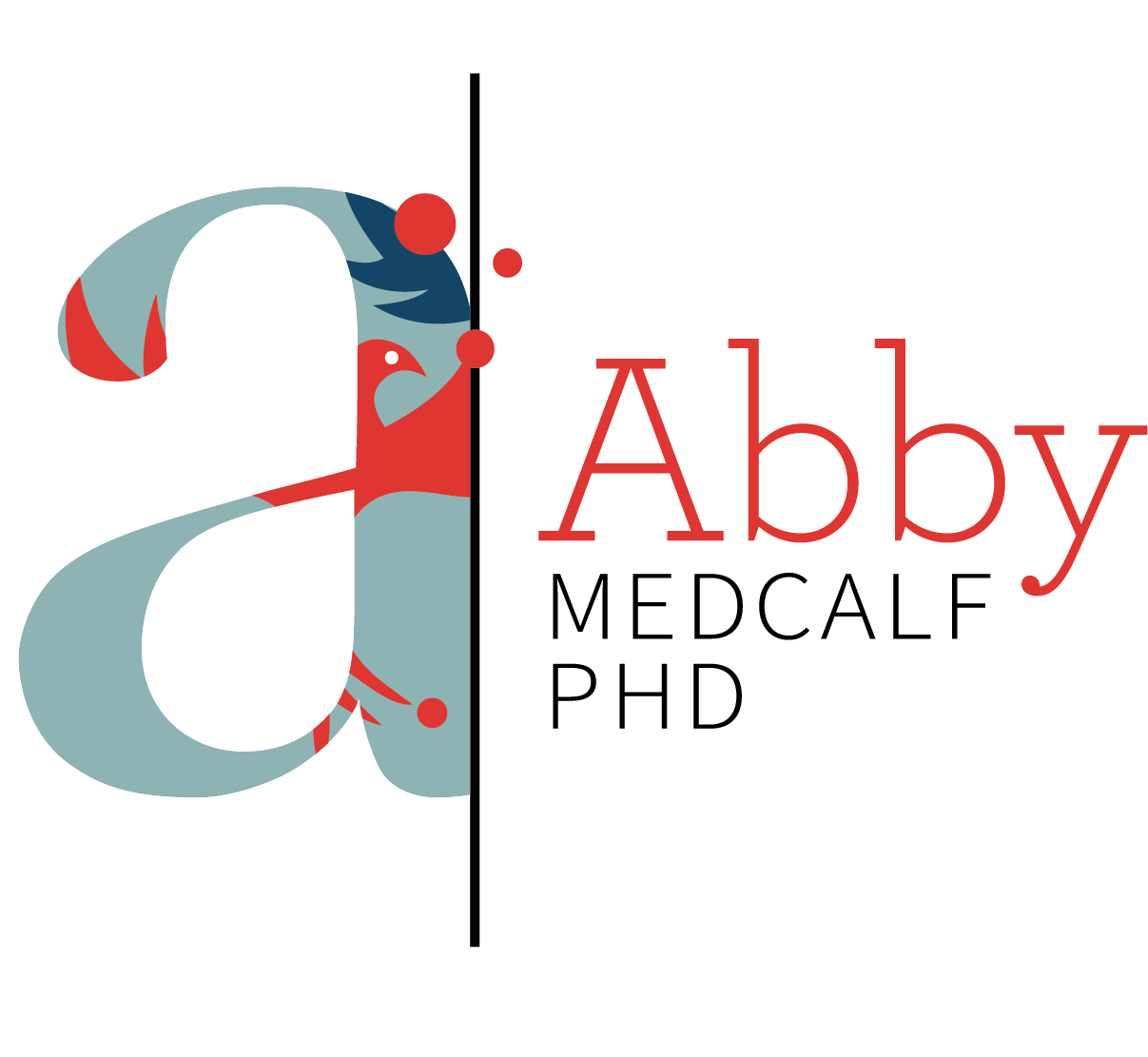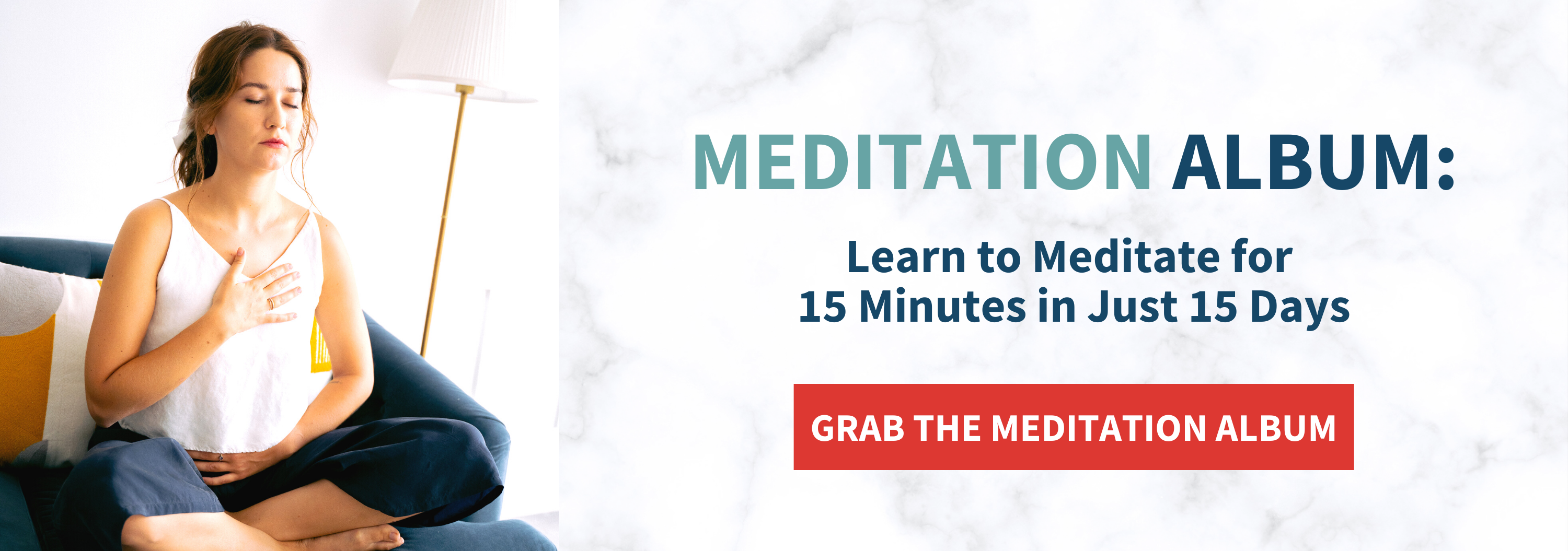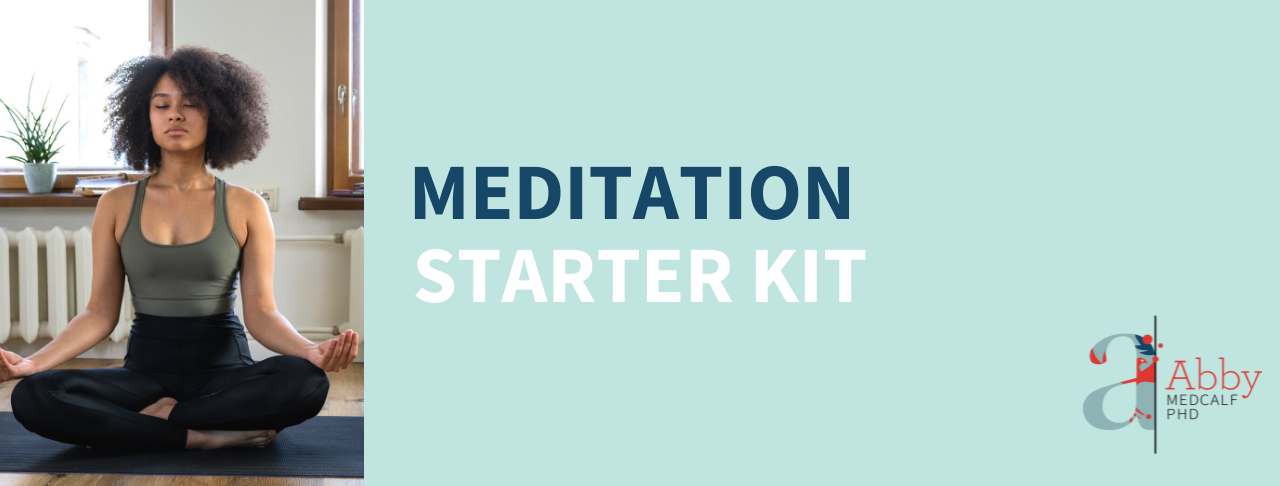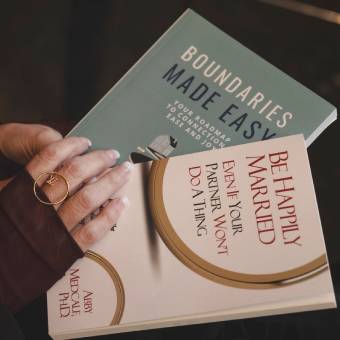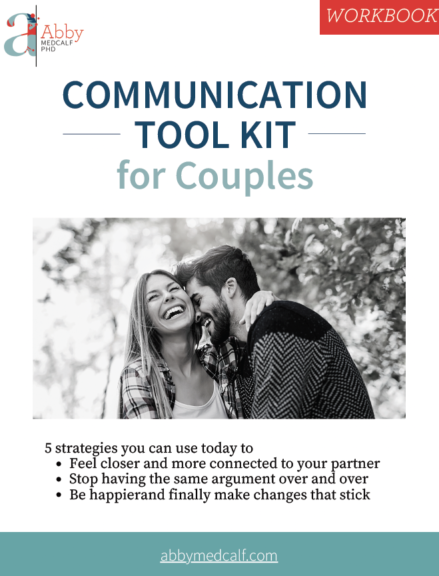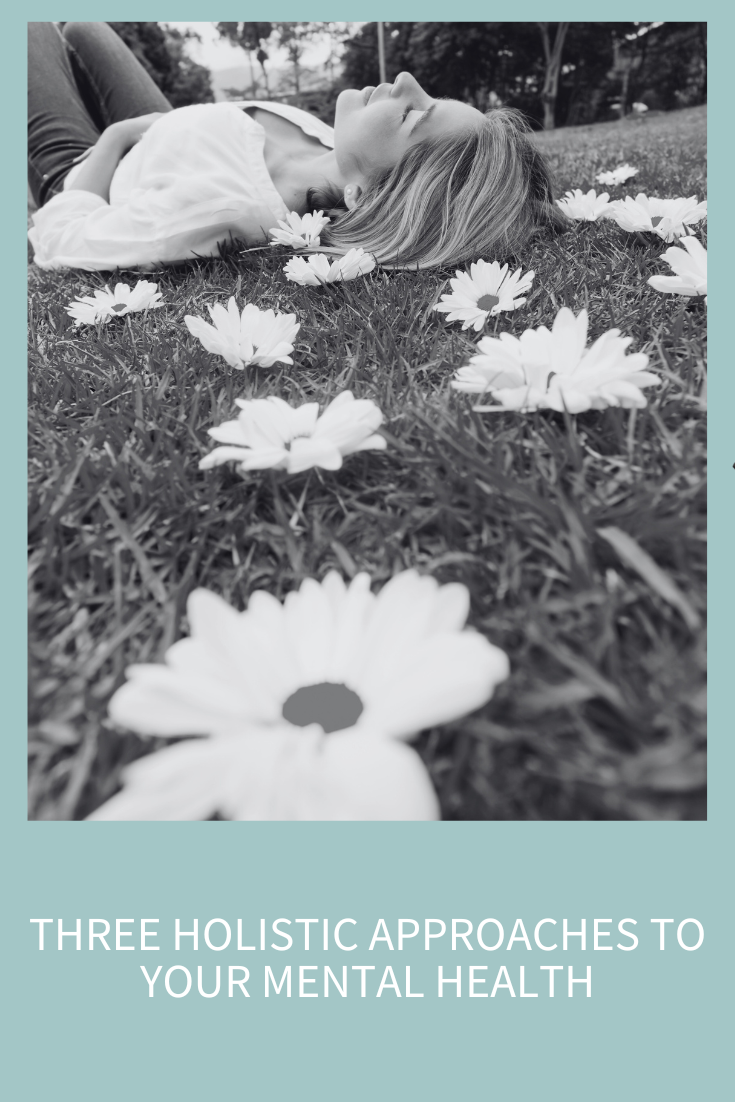
Mental health issues come in all shapes and sizes, which means that mental health treatment needs to do the same. I’ve long been a fan of holistic approaches which take into account the treatment of the whole person, not just specific symptoms. Today, we’ll talk about three of my favorite approaches: biofeedback, yoga, and acupuncture. We’ll discuss how all three are excellent, proven approaches for mental health issues such as substance use disorder, OCD, PTSD, ADHD, anxiety, and depression and whether these treatments are right for you.
11-minute read
Before we begin, I want to say three quick things.
First, my absolute favorite holistic approach to mental health is meditation. I’ve done an entire episode on how meditation will transform all your relationships (including the one with yourself), so I’m not going to spend time on meditation today. But, if you want to learn how to meditate, you can download my free meditation starter kit or you can buy my Learn How to Meditate for 15 Minutes in Just 15 Days mini course. You can also use any of the great apps out there, like Insight Timer or Calm. I don’t care what you choose, but please look into incorporating some meditation or visualization into your daily routine.
Second, holistic approaches are meant to augment regular therapy by a certified health professional. It’s like taking medication for a mental health issue. It’s not meant as a substitute; it’s most effective when used in conjunction with good therapy or coaching.
Lastly, all of these approaches have robust research showing they also help with different physical issues, including cardiovascular, migraines, and pain management situations. I’m not going to focus on the physical today and, instead, am going to (mostly) stay in my lane focusing on mental health and these modalities. But if you have a co-occurring physical issue along with anything you’re struggling with mental health-wise then you really need to be listening to this information.
Introduction
When someone says they have a holistic mental health approach, what they’re saying is that their approach is focused around the interrelationship between body, mind, and spirit. The National Center for Complementary and Alternative Medicine at the National Institutes of Health here in the US was created in 1992 to help evaluate these holistic or alternative methods of treatment, identify the ones that are effective, and help integrate them into mainstream health care.
This organization is incredibly important for anyone who wants evidence-based approaches and to feather out fact from fiction since there’s so much misinformation out there. They have articles explaining how to understand clinical studies, how research works, as well as how to understand medical terminology.
Let’s Talk Biology
The reason these holistic approaches are an excellent addition to regular therapy is because, when you’re talking about mental health diagnoses, you’re talking about a hijacked brain. So, although you might learn a great technique or tip in therapy, you likely find yourself not able to use it or forgetting about it in those times when you most need it.
You can’t remember the great tools Abby taught you because the thinking part of your brain is shut down. Your brain has been hijacked! Doing a physical thing to “un-hijack” your brain first is key so you can then access your thinking brain and all the great tools you’ve learned.
It’s time for a very quick biology lesson so you can understand how important these holistic treatments are. You have a nervous system that is made up of your brain, spinal cord, and all your nerves. Your nerves send messages between your brain and the rest of your body. Your nervous system is actually made up of two different nervous systems: voluntary and involuntary. You use your voluntary nervous system any time you control your body movements (like waving your hands or talking). Your involuntary nervous system is the one you’re not in control of and oversees things like digestion, breathing, and salivating.
That involuntary nervous system (INS) has two different nerve pathways: relaxed and emergency. When there’s anything your brain perceives as a threat, your INS’s Emergency system takes over:
- Stress Hormones flood your system with a burst of energy (to run)
- You might get a sinking feeling in your belly
- Your heart beats faster to pump more blood
- Your breathing becomes more shallow & faster to take in more air
- You might start sweating and
- Your pupils become bigger (to see in the dark)
This response was all well and good a million years ago when we were running from predators, but now it gets in the way. Imagine you’re at work at 8:00 am, and your boss says she wants to see you at 2:00 pm. Or imagine noticing your partner seems grumpy in the morning, and you ask them if they’re OK, and they tell you they’re not but need to get to work, so they’ll speak to you later.
Yes! You can feel your stomach sink as your brain goes into overdrive, wondering what’s wrong. You try to keep busy doing other things, but your brain keeps pulling you back to the situation that has you upset. This is because you weren’t supposed to stop thinking about the tiger trying to eat you!
A million years ago, running from a predator would have burned off the stress hormones being dumped into your system as you ran for your life. But in today’s scenarios of chronic stress, you’re not physically running from anything, so those stress hormones don’t burn off. Instead, they keep rushing through your body, and that stress becomes anxiety. This is the reason that tips don’t often work because your brain is hijacked. It’s all about releasing your brain from that state first and then using your other great problem-solving tools.
Meditation, yoga, biofeedback, and acupuncture are ways to override your physical responses so you can remain calm and in control of your thinking and reactions.
I. Yoga
Yoga is a system of breathing practices, meditation, stretching, breathing, physical exercises, and postures intended to integrate the practitioner’s body, mind, and spirit. Yoga originated in Northern India and has been around for over 5000 years.
There are many different schools of yoga, such as Vinyasa, Ashtanga, Hatha (and Iyengar, which is a subset of Hatha), Bikram, and Tantra. Each has its own blend of breathing and postures as well as its own goals for the practitioner.
Why it Helps
- The way yoga integrates the mental, physical, and spiritual dimensions of being human is helpful to people struggling with distorted cognitions (like we see with PTSD, depression and anxiety).
- The stretching, bending, and balancing involved in the asanas (physical postures that are part of a yoga practice) help to align the head and spinal column; stimulate the circulatory system, endocrine glands, and other organs; and keep muscles and joints strong and flexible.
- Yoga programs have been shown to reduce the risk of heart disease by lowering blood pressure and anxiety levels.
- The breath control exercises, known as pranayama, emphasize slow and deep abdominal breathing. They benefit the respiratory system, help to induce a sense of relaxation, and are useful in stress management.
- Although Western medical researchers have been studying yoga only since the 1970s, clinical trials in the United States have demonstrated its effectiveness in treating asthma, osteoarthritis, heart disease, stress-related illnesses, high blood pressure, anxiety, and mood disorders.
- In addition, yoga studies have indicated that yoga is an “effective tool” in the treatment of obsessive-compulsive disorder (OCD) as well as substance abuse. Subjects who practice yoga tend to score higher in life satisfaction, with lower levels of irritability and psychosomatic complaints, than control groups.
Advantages of Yoga
One of the great advantages of yoga is that it’s adaptable to a wide range of psychiatric (and physical) conditions.
- There are tons of different schools of yoga to help with individual needs and within each school there are different things that can be adapted even further for your particular situation.
- Although it’s great to physically get to a class, you can learn at home via YouTube or other forms of social media.
- You can learn for free or for a modest fee in most areas.
- If you’ve never exercised before (or if it’s been a long minute) yoga is a very accessible (and private if you’re self-conscious) way of moving again.
- You don’t need a bunch of expensive or hard-to-get equipment. You can start with a square of floor space, a sticky mat (so you don’t slip) and some loose clothing.
Precautions for Yoga
- Everyone should consult a medical doctor of their choice before starting yoga, but especially anyone with a history of injuries (especially back problems), heart disease or problems with balance (like inner ear issues).
- If you’re pregnant, there are modifications you should be aware of at different times during your pregnancy.
- Although yoga is wonderful for most mental health issues, anyone with a history of severe trauma (especially physical) or any kind of dissociative disorder should consult with their therapist, go slow, and pay special attention to any yogic breathing practices. Some of the deeper breathing (pranayama) can trigger depersonalization symptoms.
- If your issue is being a perfectionist, Type A, or highly competitive, it’s important to have many reminders that all-or-nothing thinking isn’t useful here (nor is a “no pain, no gain” philosophy).
In general, you need to go slow, listen to your body, and notice how you’re feeling.
II. Biofeedback
If you’ve ever stepped on a scale or taken your temperature, you’ve employed biofeedback. You’ve used an instrument to “feed back” information to you about your body’s condition. Biofeedback is a mind-body technique and training that teaches people to control some of their body’s functions, such as heart rate and breathing patterns. It uses electrodes and sensors to measure these functions and display them on a monitor for you to see. I love referring clients to biofeedback because I know they’re going to learn a skill they can use for the rest of their lives to help control their anxiety and stress.
When you use biofeedback, you take responsibility for your well-being and mental health.
How Does Biofeedback Work?
As I mentioned earlier when we discussed your brain getting hijacked, it’s important to remember that any stress is treated like a threat to your brain. And although those threats aren’t physical, your responses are!
Having a way to get your breathing back in order and your brain on track is the goal, and biofeedback techniques allow you to do just that.
Three Types of Biofeedback
- Electromyography (EMG) which measures muscle tension
- Thermal Biofeedback which measures skin temperature
- Neurofeedback or EEG which measures brain wave activity
What Happens in a Session?
- Electrodes are attached to the skin
- They send information to a small monitoring box that translates the measurements into a tone, a visual meter, or a screen with moving lines on a grid
- A biofeedback therapist leads you in mental exercises. Through trial and error, you’ll learn to identify mental activities/breathing patterns that will mitigate negative physical responses and promote healthy ones.
- Each session is generally one hour, and the number of sessions depends on you and the condition being treated but it’s often between 8 to 10 for most people. You’ll then have tools you can practice from five to ten minutes per day and/or whenever you need them.
Advantages of Biofeedback
It helps in a multitude of areas including:
Precautions
- It’s important to find a certified practitioner, and that might not be accessible where you live.
- Many insurance plans in the US don’t cover biofeedback, so cost could be an issue.
- As with all modalities, check with your therapist or certified mental health service provider to make sure your particular mental health issue isn’t contraindicated with biofeedback. As with yoga, people with severe physical trauma or a history of dissociation might have difficulty with biofeedback.
- If you have a physical issue with your heart or breathing, check with your health provider before starting.
III. ACUPUNCTURE
Acupuncture is among the oldest healing practices in the world and its use dates back at least 3000 years in China. Acupuncture is the stimulation of specific points on the body by a variety of techniques, including the insertion of thin metal needles through the skin. These points connect with meridians in the body. The goal is to remove blockages in the flow of qi (pronounced “chee”) along these meridians so that physical and mental health can be restored.
Can Acupuncture Really Help Mental Health Conditions?
Yes! There are numerous and robust studies showing the effectiveness of acupuncture with:
- Substance Use Disorder including withdrawal/detox, cravings, and discomfort
- Anxiety including PTSD
- Depression
- Obsessive Compulsive Disorder (OCD)
- Bipolar Disorder
Precautions
Like meditation, biofeedback, and yoga, acupuncture is generally a very safe and effective treatment. And, like those other three holistic approaches, you should speak to your mental health provider and/or your physical health provider about possible contraindications for using acupuncture. These include people with bleeding disorders, immunocompromised individuals, and some heart patients.
Resources for Three Holistic Approaches to Your Mental Health
How Meditation Benefits Your Relationships and There’s an Easy Way to Learn
Learn to Meditate for 15-minutes in Just 15 Days
3 Tips to Calm Yourself in Seconds
National Center for Complementary and Integrative Health
NIH, Understanding Clinical Studies
NIH, Explaining How Research Works
National Library of Medicine, Understanding Medical Words Tutorial
Kuppili, P. P., Parmar, A., Gupta, A., & Singh Balhara, Y. P. (2018). Role of Yoga in Management of Substance-use Disorders: A Narrative Review. Journal of Neurosciences in Rural Practice, 9(1), 117-122. https://doi.org/10.4103/jnrp.jnrp_243_17
Biofeedback and Stress Management, Idaho State University
Biofeedback program, University of Michigan Health-Sparrow
NCCIH, Psychological and Physical Approaches for Substance Use Disorders: What the Science Says
